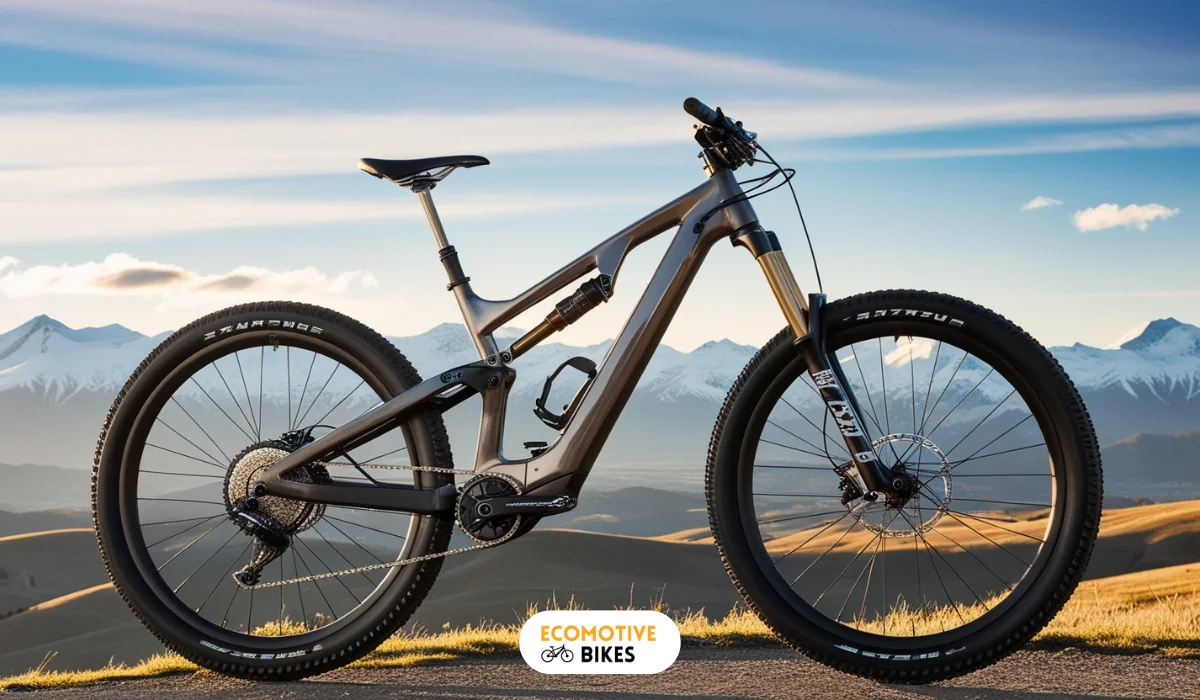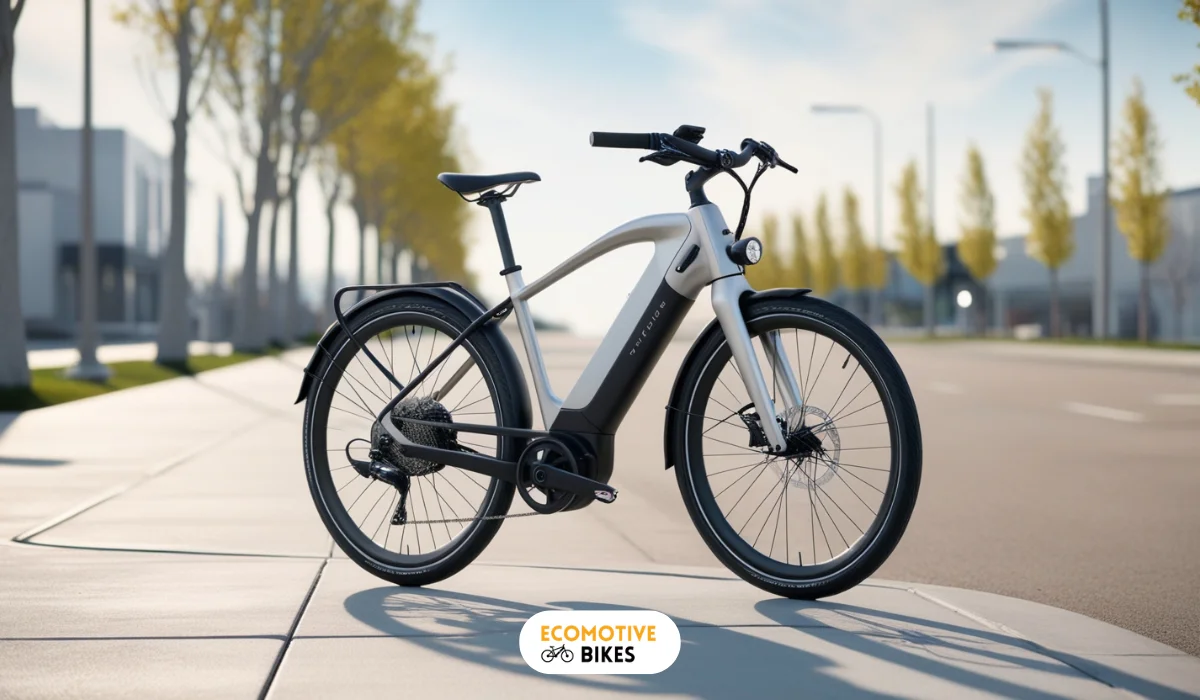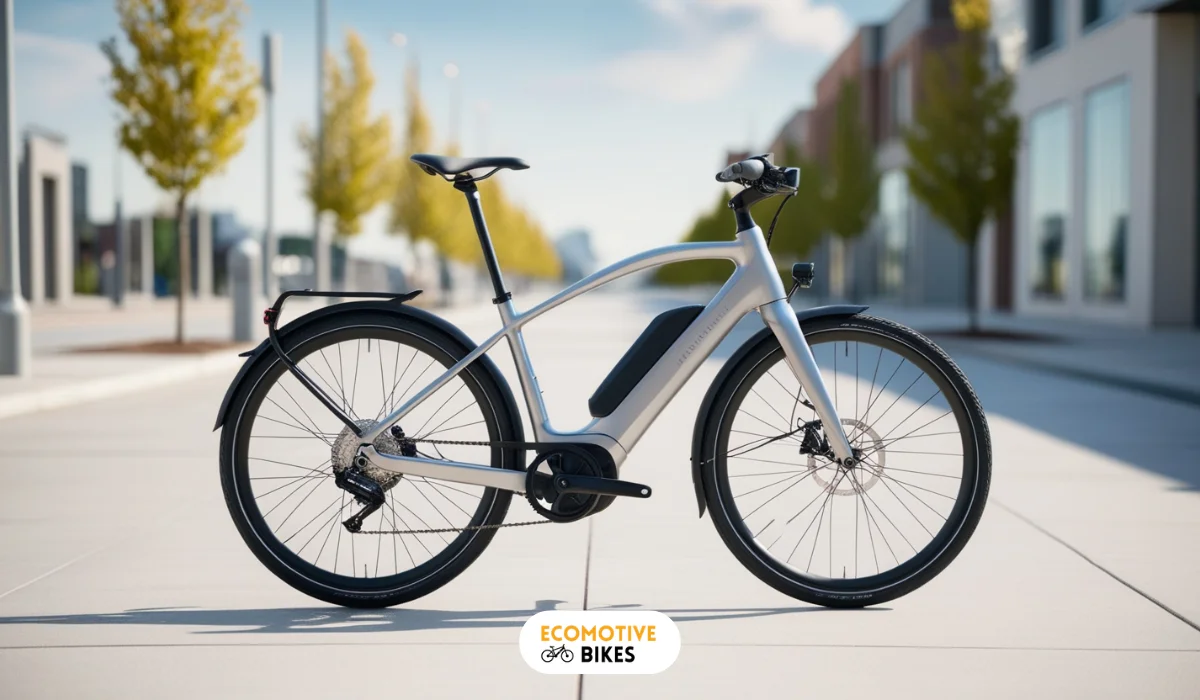How to choose the right tire for your electric bicycle?
Discover how to choose the right tire for your electric bicycle by considering factors such as tire size, tread pattern, terrain, and puncture resistance.
Table of Contents
Related Articles:
I’ve learned that when it comes to my electric bicycle, the right tire can make all the difference in how it handles and rides. With e-bikes spending more time at higher speeds than standard bicycles, a good tire is crucial for speed, range, suspension, and maneuverability.
A bad tire can lead to a painful flat tire change on a hub motor wheel, so be careful and choose wisely.
In this article, I’ll share my experience and knowledge on how to choose the right tire for your electric bicycle, considering factors like terrain, size, and brand.
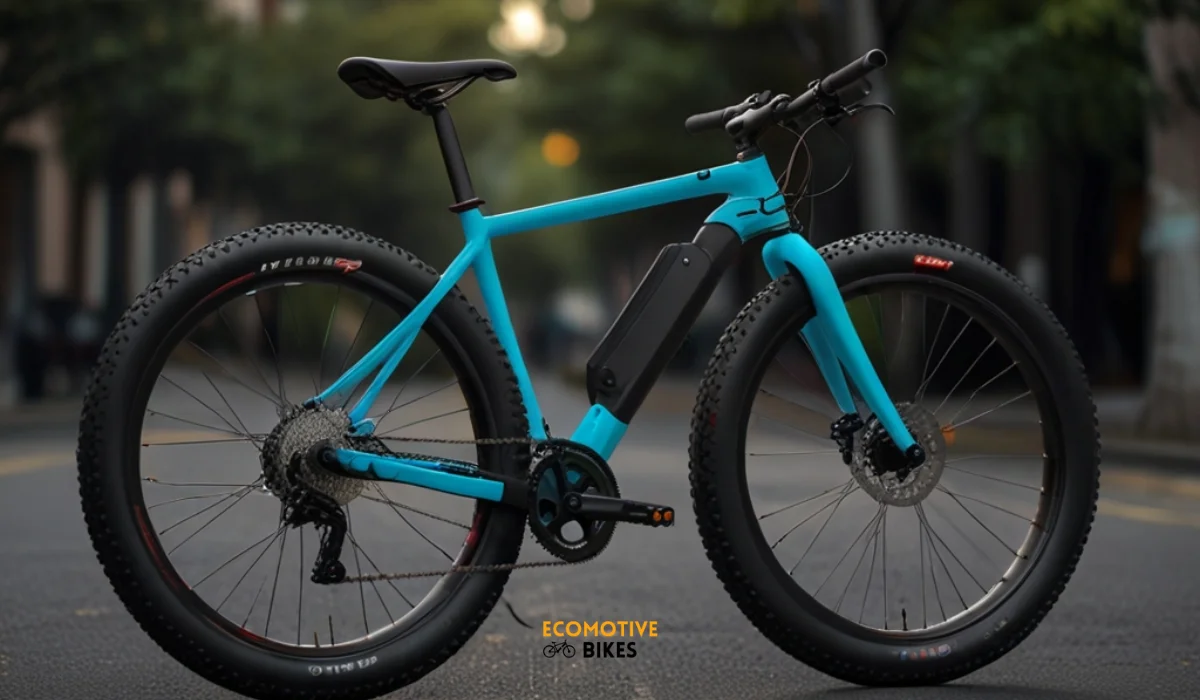
How to choose the right tire for an e-bike?
When selecting the right tire for your e-bike, consider several key factors. First, ensure the tire size matches your bike’s specifications. Choose a tread pattern suited to your terrain, whether road, off-road, or mixed surfaces. Look for puncture-resistant features to reduce the chance of flats. Low rolling resistance improves efficiency, while durability ensures long-lasting performance. Always factor in your riding style and the conditions you’ll encounter most often for optimal results.
You should also consider the following points:
On-road tires
With most people riding their e-bikes on hard surfaces like asphalt or concrete, a smoother tread is necessary for those hard, flat surfaces. Commuter-style tires are ideal for this type of riding, offering a balance between slick tread and grooves for water dispersion. Avoid super skinny road tires, as they can be slippery in wet conditions.
Off-road tires
Off-road enthusiasts, on the other hand, require a knobby tire with an aggressive tread for maximum traction in less forgiving environments. BMX tires may work for packed dirt, but serious trail riders need something closer to a downhill tire for extreme grip.
Your off-road tire choice will depend on the type of terrain you’ll be tackling. If you’re hitting rough trails, look for a tire with deep treads and a sturdy construction to handle the abuse. Be mindful that, the right off-road tire can make all the difference between a fun ride and a frustrating struggle.
What is the best tire size for electric bikes?
Clearly, tire size plays a significant role in your electric bicycle’s performance. The size of your tire is measured in two ways: diameter and width. A standard 26 x 1.95 tire, for instance, has a diameter of approximately 26 inches and a width of approximately 1.95 inches. But is it possible to use different tires?
Choosing tire width – advantages of wide tires
Wide tires provide a larger contact area with the ground, which enhances stability and reduces the chances of skidding or lateral movements while cycling. These tires can be inflated at lower pressures, typically between 1.5 to 1.8 bars, resulting in better shock absorption and increased comfort, especially on rough or rocky surfaces.
Their broader sidewalls allow for greater grip on uneven terrains, making them ideal for riding on gravel, stones, or dusty paths. With more air volume, wide tires offer superior cushioning, contributing to a smoother ride, which is particularly important for e-bikes used to transport cargo or children.
The benefits of wider tires extend to improved grip on wet or slippery surfaces, better braking, and reduced chances of skidding when accelerating or turning. However, it’s important to note that the contact area increases as tire pressure decreases.
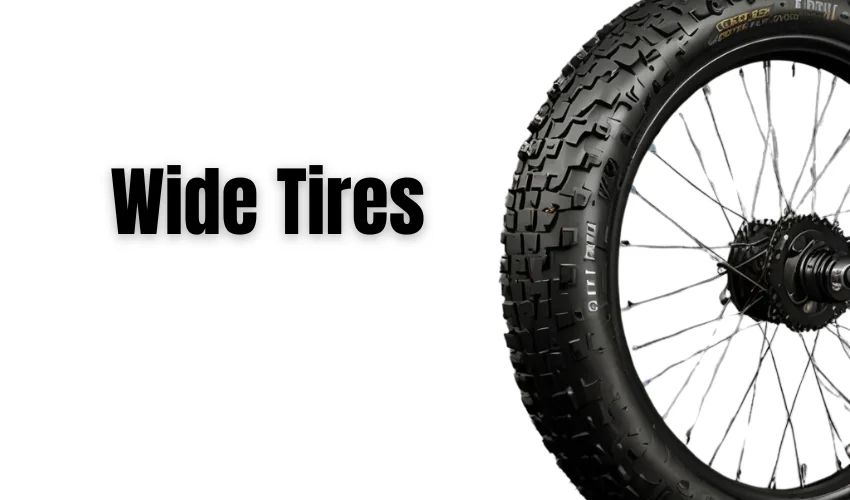
Disadvantages of wide tires
Wide tires create more rolling resistance due to increased friction with the terrain, which can slow down the bike and increase energy consumption—both electrically and physically. While their added weight might not significantly affect electric bikes, it does reduce handling agility, particularly for mountain biking, where a few extra grams can impact performance.
Although lower tire pressure improves comfort, it can make wide tires more flexible, leading to reduced control in corners and potential safety issues on downhill rides. Lower pressure can also damage the tire’s sidewalls and rims over time. Additionally, wide tires tend to be more expensive.
Advantages of narrower tires
Narrow tires generate less friction with the ground, which allows for faster speeds and reduces energy and battery consumption. Their lighter weight offers better maneuverability, especially for road, urban, and gravel bikes.
On smooth surfaces like asphalt, narrow tires provide more precise handling. Since they require higher inflation pressures, they are less prone to punctures. Narrow tires are also quieter and generally more affordable.
Note: A well-maintained tire is less likely to leave you stranded on the side of the road!
Disadvantages of narrower tires
Narrow tires are less suitable for rough, rocky, or slippery terrain, where they may lose traction and struggle with grip. On uneven surfaces, they can bounce or skid, leading to a less stable ride. Due to lower cushioning, they may accelerate wear on bike rims and spokes, increasing the risk of damage over time.
Balancing comfort and speed
Any electric bicycle enthusiast will tell you that finding the perfect balance between comfort and speed is key. On my personal e-bikes, I like to go with as wide a tire as possible, usually up to about 2.5 inches, and keep the pressure pretty high. This way, I can enjoy a comfortable ride while still achieving decent speed and range.
Matters of personal preference aside, it’s vital to consider your riding style and terrain when choosing the right tire size. By weighing the pros and cons of wider and narrower tires, you’ll be able to make an informed decision that suits your electric bicycle needs.
How to measure tire width
For narrow tires—typically used on racing, city, gravel, or trekking bikes—the standard width is up to 2.3 inches. For rough or rocky terrains, commonly found in eMTBs, tire widths range from 2.4 to 2.7 inches. For extremely challenging terrains, or if maximum comfort is required (such as in mountain or fatbikes), tire widths can range from 2.8 to 4 inches.
It’s important to note that even if two tires are labeled with the same width in inches, the actual width can vary depending on the brand. Therefore, it’s advisable to refer to the ETR-TO measurement, for example, 55-622, where the first number represents the tire’s width in millimeters when mounted, and the second number is the rim’s circumference. For example, Schwalbe tires tend to be wider than Maxxis tires, even with the same inch measurement.
Tire weight
Lightweight tires should be inflated to higher pressures—at least up to 2.5 bars—to reduce the risk of punctures. Tires with reinforced walls, such as Maxxis Exo (level 1 reinforcement) or Exo Plus (level 2 reinforcement), help mitigate this risk. These tires are more agile and easier to handle, making them well-suited for road and asphalt riding.
Heavier tires, on the other hand, can be inflated at lower pressures, around 1.5 bars, which makes them ideal for e-MTBs and handling uneven terrains with better shock absorption.
Tire inflation pressure
Lower tire pressure improves shock absorption and helps manage uneven terrain. However, if the pressure is too low, it can cause drifting and may damage the tires as the tire walls could be pinched by the sharp edges of the rim, especially with inner tube tires. Therefore, low pressure is only recommended for stronger, wider, or reinforced tires, though it can accelerate tire wear.
Higher tire pressure, on the other hand, improves rolling efficiency, reduces resistance, and increases speed, which saves both battery life and energy. It also slows tire wear but is less suitable for rough or rocky terrain.
Tire Design
Tires with deep tread patterns or pods offer better grip on uneven terrain but wear out quickly on asphalt. In contrast, tires with shallow tread patterns have less rolling resistance, providing better speed on smoother surfaces like roads. Deep treads or pods, however, perform better on wet surfaces but may slightly reduce speed.
For road tires, rolling resistance is inversely related to the tread depth. Shallow designs help maintain speed, while deeper patterns offer more grip on wet surfaces but may reduce overall speed.
How tires can affect rim and spoke wear
Tires inflated to very high pressures, over 3.2 bars, absorb minimal shock. This lack of cushioning can accelerate the wear on rims and spokes, potentially leading to deformation over time. However, high pressure also has benefits—it reduces the risk of punctures and slows overall tire wear. Balancing pressure is key for longevity.

Tire pressure and maintenance
Now that we’ve discussed the importance of choosing the right tire for your electric bicycle, it’s time to talk about maintaining those tires to ensure optimal performance and safety.
Optimal tire pressure
For optimal performance, it’s vital to maintain the recommended tire pressure. Underinflated tires can lead to reduced speed, range, and maneuverability, while overinflated tires can cause a harsh ride and increased risk of punctures.
Avoiding flat tires
On the road, nothing is more frustrating than getting a flat tire. It’s even more challenging when you’re dealing with a hub motor wheel.
Understanding the importance of proper tire pressure and regular maintenance can help you avoid flat tires. Check your tire pressure regularly, and make sure to inspect your tires for signs of wear and damage. A good quality tire with proper pressure can significantly reduce the risk of punctures.
Here is a table showing the ideal tire pressure that can help you adjust the pressure to fit your needs. It breaks down the recommended tire pressure based on factors like your weight, the type of terrain you ride on, and your bike’s tire size. This helps you get the best performance, comfort, and safety while riding:
| Tire pressure – front: 1.8 – 2.0 bars / rear: 2.0 – 2.2 bars | Recommended pressure variation (in bars) | |
| Cyclist weight | Lightweight, up to 65 kg | -0.3 |
| Heavy, over 75 kg | 0.3 | |
| Tire walls | Thin | 0.2 |
| Thick | -0.2 | |
| Tire width | Narrow, up to 2.35 inches | 0.2 |
| Wide, over 2.35 inches | -0.2 | |
| Riding | Quiet | -0.3 |
| Aggressive | 0.3 |
Popular electric bicycle tires
Not all tires are created equal, and when it comes to electric bicycles, the right tire can make all the difference. Here are some of my favorite tires that I’ve tried and tested over the years.
I’ve narrowed down my choices to a few brands, but Maxxis is one of my top picks. Here are some of their popular models:
Maxxis Hookworm
Popular among commuters, the Maxxis Hookworm is a great all-around tire. With its flat tread and grippy rubber, it’s perfect for street use. Plus, it’s rated up to 110 PSI, so you can pump it up high for improved speed and range. And the best part? It’s under $40!
Maxxis Holy Roller
Any ebike rider who wants a tire that can handle both on-road and off-road terrain should check out the Holy Roller. This tire features a unique tread pattern that works well on both hard surfaces and dirt trails. You can get it in two sizes: 26 x 2.2 and 26 x 2.4. And at just $35 a tire, it’s a great value.
With its aggressive tread, the Holy Roller can handle some tough off-road conditions, but it’s not extreme enough for dedicated trail riders. However, if you only do occasional off-roading, this tire is a great compromise.
Maxxis High Roller
On the other hand, if you’re an extreme off-road enthusiast, the Maxxis High Roller is the way to go. With its very aggressive tread, this tire can grip anything you throw at it – mud, gravel, sand, you name it. Just keep in mind that it’s not ideal for street use, as it can reduce your speed and range. You can pick it up on Amazon for $47 a piece.
Maxxis High Roller tires are designed for extreme off-road use, so they’re perfect for those who want to tackle tough terrain. With their aggressive tread, you’ll have maximum traction and control, even in the most challenging conditions.
Schwalbe Tires
All Schwalbe tires are known for their high quality and excellent performance, making them a popular choice among electric bicycle riders.
Schwalbe Big Apple
For riders who want a fast and efficient tire, the Schwalbe Big Apple is an excellent option. With its large size and sleek tread design, this tire provides a smooth ride and excellent puncture resistance.
Schwalbe Marathon Plus
Any rider looking for a high-performance tire that can deliver exceptional speed and range should consider the Schwalbe Marathon Plus. These tires are designed for efficiency, with a narrower 26 x 1.75 size that reduces rolling resistance and increases speed.
Schwalbe Marathon Plus tires also feature an extra thick protective strip running down the center of the tire, providing excellent puncture resistance against road debris. With these tires, you can expect to gain 1-2 mph in speed, making them an excellent choice for riders who want to maximize their range.
Schwalbe Marathon
To save a few bucks without sacrificing too much performance, consider the Schwalbe Marathon tire. These tires offer similar performance to the Marathon Plus, but at a lower price point.
Plus, the Schwalbe Marathon tires still provide excellent puncture resistance and a smooth ride, making them a great option for riders who want a high-quality tire without breaking the bank.
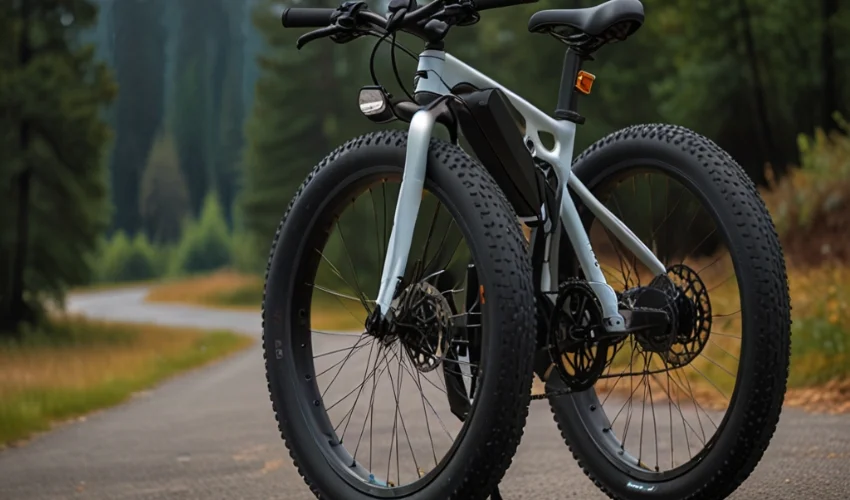
Electric bicycle tires: A personal choice
Unlike other components of your electric bicycle, tires are a highly personal choice. What works for someone else may not work for you, and it’s necessary to consider your specific needs and preferences when selecting the right tire.
Speed and range
Swiftly, you’ll want to think about speed and range. If you’re looking to pick up speed and increase your range, you’ll want tires with a narrower profile and a smoother tread pattern. These tires will provide less rolling resistance, allowing you to go faster and farther on a single charge.
Off-road capabilities
For those who venture off the beaten path, off-road capabilities are crucial. Knobby tires with an aggressive tread pattern will provide the traction and grip you need to tackle rough terrain. However, these tires may not be the best choice for on-road riding, as they can be slower and less efficient.
The type of off-road riding you plan to do will also influence your tire choice. If you’re hitting rough trails, you’ll want a tire with even more aggressive tread, while those who stick to packed dirt or gravel may be able to get away with a less aggressive tire.
Budget and quality
The budget-conscious rider will want to consider the cost of tires, as well as their quality. While cheaper tires may be tempting, they may not provide the same level of performance, durability, or puncture resistance as higher-end options. On the other hand, high-quality tires may be more expensive, but they can provide a smoother ride, better traction, and longer lifespan.
To get the best value for your money, consider your riding habits and needs. If you’re a casual rider, a mid-range tire may be sufficient. However, if you’re a serious enthusiast or use your electric bicycle for daily commuting, investing in a high-quality tire may be worth the extra cost.
Conclusion: How to choose the right tire for your electric bicycle?
So, choosing the right tire for your electric bicycle is a personal decision that depends on your specific needs and preferences. By considering factors such as terrain, tire size, and brand, you can find the perfect tire that balances comfort, speed, and range.
Whether you’re a casual commuter or an off-road enthusiast, there’s a tire out there that’s right for you. Be mindful that, the best tire is the one that gets you out on the road and enjoying the ride!

